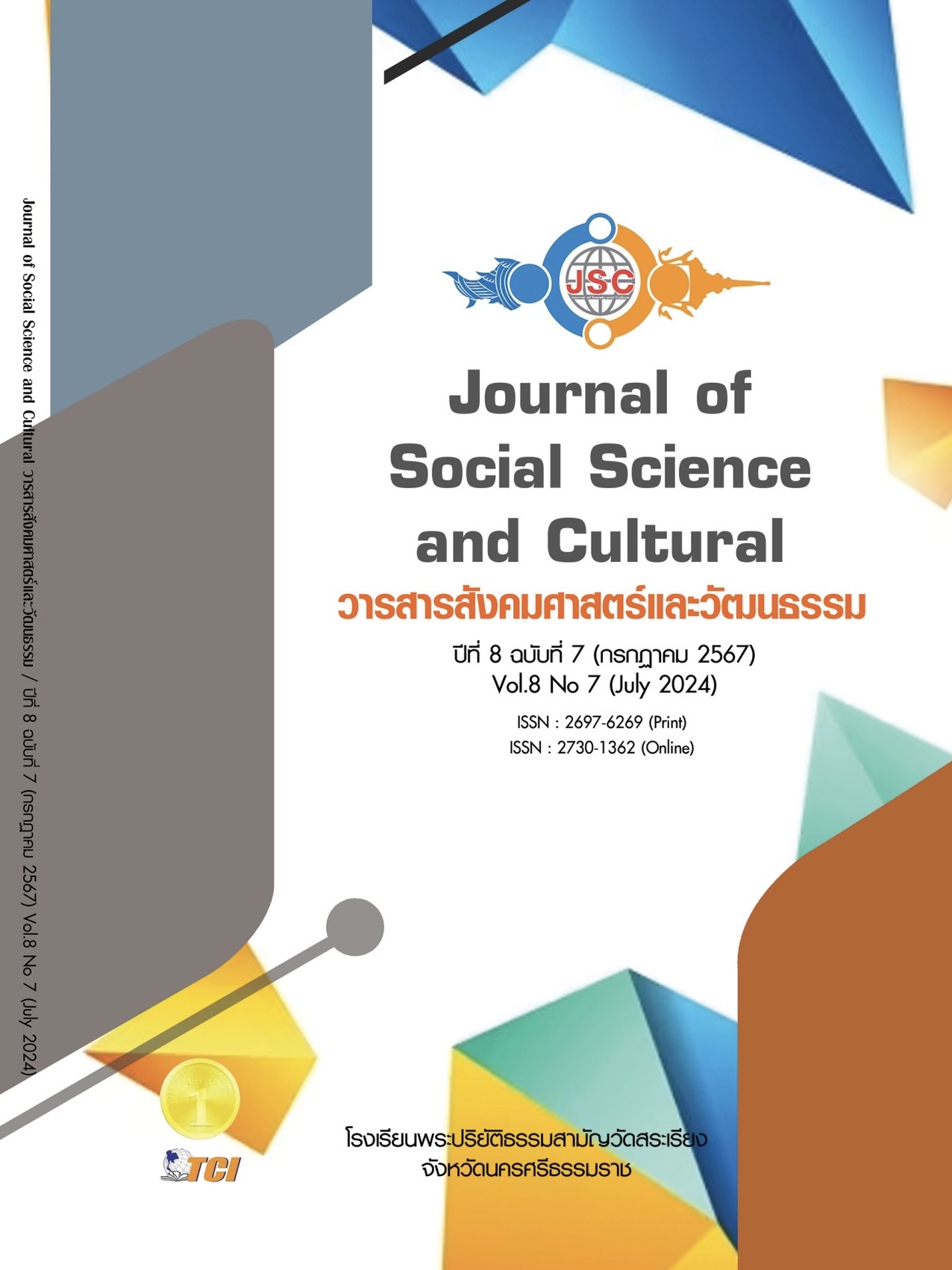MODELLING OF HOURLY PRICE VOLATILITY OF THAILAND PROPERTY STOCK MARKET USING GARCH ANALYSIS
Main Article Content
Abstract
The objective of this research was to examine the intraday pattern of hourly price fluctuations in the real estate stock market in Thailand. We utilized the GARCH model to assess the impact of major macroeconomic and company - specific events on hourly volatility. This study aimed to fill the knowledge gap regarding factors affecting hourly price fluctuations in Thailand's real estate stocks, providing crucial insights for risk management and investment decision - making. The top 10 highest - performing real estate companies in Thailand in 2023 were subjected to GARCH (1,1) volatility analysis to characterize and predict stock returns over time. This analysis focused on identifying factors influencing hourly price fluctuations to offer significant insights for risk management and investment strategies. By analyzing the volatility of hourly returns from 2019 to 2023, the study found that the higher level of underlying volatility at the beginning of trading gradually decreased each hour, rising again near the end of trading. This indicated that early market activity was highly volatile, with volatility diminishing later in the day. Examining volatility patterns associated with interest rate announcements revealed significant fluctuations during trading hours and sensitivity to past changes. Additionally, the research suggested that China Evergrande's bankruptcy had an insignificant impact on intraday returns and volatility throughout the trading day.
Article Details
References
Allan, K. et al. (2021). The COVID-19 Pandemic and Commercial Property Rent Dynamics. Journal of Risk and Financial Management, 14(2021), 360-375.
Amonhaemanon, D. (2014). The Impact of Stock Price and Real Estate Price Shocks on Consumption: The Thai Experience. International Journal of Financial Research, 9(2014), 61-76.
Cui, W. (2023). The Impact of COVID-19 on the Real Estate Market Based on Case and Data Analysis. Advances in Economics, Management and Political Sciences, 15(2023), 270-277.
Cuthbertson, K. (2016). Quantitative Financial Economics: stocks, bonds, foreign exchange. John Wiley and Sons, 7(2016), 234-266.
Hasnuden, M. & Mohd Ali, N. (2023). Enduring the Financial Impacts of COVID-19: Property Developers in Malaysia. International Journal of Academic Research, 13(2023), 15-25.
Islam, S. & Oh, K. (2023). Applied Financial Econometrics in E-Commerce. Contributions to Economic Analysis. North Holland Publishing, 7(2023), 442-457.
Lucca, K. & Moench, M. (2015). The Disappearing Pre-FOMC Announcement Drift. Finance research letters, 40(2015), 78-99.
Mills, T. (2019). The econometric modelling of financial time series. Cambridge University Press, 8(2019), 188-201.
Nguyen, T. (2015). The Significance and Performance of Listed Property Companies in Asian Developed and Emerging Markets. 17th Annual European Real Estate Society Conference in Milan,, 17(2015), 336-352.
Reuters. (2024). Date accessed. Retrieved February 1, 2024, from https://www.reuters.com/business
Rigobon, R. & Sack, B. (2024). The Impact of Monetary Policy on Asset Prices. Journal of Monetary Economics, 8(2024), 51-66.
Wheaton, W. (2015). The Volatility of Real Estate Markets: A Decomposition. The Journal of Portfolio Management, 41(2015), 140-150.
Yu, J. (2022). Forecasting volatility in the New Zealand stock market. Applied Financial Economics, 12(2022), 193-202.


